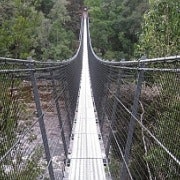What electricity will really cost
Late last week the ACT electricity price regulator released its draft electricity pricing decision for 2012-13. And the political response couldn't have been more predictable.
The Coalition raced to highlight that, out of an estimated $244 increase in annual household electricity bills, almost $190 was attributable to the carbon price. Labor and the Greens downplayed the increase and pointed out the increase would be offset by changes to income taxes, pensions and other benefits.
There will be plenty more of this over the next 18 months in the lead-up to the next federal election, and it will no doubt become increasingly difficult to separate fact from fiction. For those interested in reality, the impact of the carbon pricing scheme on electricity bills is a function of four main factors:
-- The carbon price.
-- How much CO2 is released in generating your electricity (i.e. the carbon intensity of electricity).
-- What proportion of the carbon price is passed onto consumers.
-- How much electricity you use.
Over the next three years, the carbon price will be fixed, starting at $23, so that component is easy to predict.
The carbon intensity of electricity in each jurisdiction is well known (see table below). It is highest in Victoria where they rely heavily on brown coal to generate their electricity; it is lowest in Tasmania where they have a lot of hydro electricity generation. In fact, Victoria's electricity generators produce four times as much CO2 per kilowatt as their Tasmanian counterparts.
NSW/ACT | 0.89 |
Victoria | 1.21 |
Queensland | 0.88 |
South Australia | 0.68 |
Western Australia | 0.8 |
Tasmania | 0.3 |
Northern Territory | 0.67 |
While emission of intensity of today's generation is well known, what is less clear is how rapidly it will fall in response to the introduction of the carbon price and other policies. Generally, the quicker it falls, the lower the impact of the carbon price on electricity bills.
The proportion of the carbon price that is passed onto consumers is the great unknown, with most projections hovering in the 70-100 per cent range. After July 1, there will finally be hard data on whose projections were most accurate. Again, if a lower proportion of the carbon price is passed onto consumers, the impact on electricity bills will also be lower.
The fourth factor, household electricity use, is the only issue that consumers have some influence over. Currently, on average, Australia's eight million households use approximately 7 MWh each year. However, not surprisingly, consumption differs significantly between households and depends on the number of people in the house, how well it is designed, climatic factors and personal preferences, especially for very warm homes in winter or very cool homes in summer.
To work out the impact of the carbon price on a household electricity bill, these four factors have to be multiplied: carbon price x carbon intensity of electricity x proportion of carbon price passed onto consumers x annual household electricity consumption. An adjustment then has to be made for the electricity lost in transmission and distribution (roughly 5 per cent). And then you need to add in an additional 10 per cent for GST.
For example, the impact of the carbon price on the average annual household electricity bill in NSW in 2012-13 will be: $23 x 0.89 x 1.0 x 7 x 1.05 x 1.1 = $165 (or $3.18 per week). (This assumes that 100 per cent of the carbon price is passed onto consumers.) To put this in perspective, it constitutes 0.18 per cent of average household income in NSW.
In the ACT, the average dollar impact is expected to be higher ($189 per year, or $3.64 per week). The reason is that average household electricity use in the ACT is in excess of 8 MWh per year, significantly above the national average. Average household income in the ACT is also well above the national average (by well above, we mean over $30,000). As a result, the increase only constitutes 0.16 per cent of average household income.
For reasons known best to themselves, the ACT electricity regulator and the media have focused heavily on the apparently large annual increase rather than the apparently small impact on weekly household budgets, and that is before compensation is provided to most households.
Admittedly, in the abstract, an increase of $150-200 in the annual household electricity bill can seem quite large, even though it constitutes only a small proportion of household income. Comparing it to discretionary expenditures puts it into perspective. For example, the average Australian household spends about $15.30 per week on mobile phones, $5.25 on pay TV and $32 on cafe and restaurant meals. While rising electricity bills are often presented as the straw that breaks the camel's back, it seems a lot of other spending is responsible for getting the camel into such poor shape.
Using averages brushes over impacts on poorer households; for some, an additional $3.20 per week can cause true hardship. To account for this, these households will receive the most compensation. This is not only fair but it reflects the fact that those who earn the least will find it hardest to cut their bills.
Andrew Macintosh is the associate director of the ANU Centre for Climate Law and Policy and Richard Denniss is the executive director of The Australia Institute.
* The research has been published in an article, Politicization of Science in the Public Sphere: A Study of Public Trust in the United States, 1974 to 2010 (American Sociological Review 77(2) 167-187).
This article was originally published on Crikey on April 12.
















